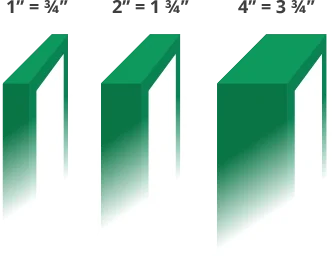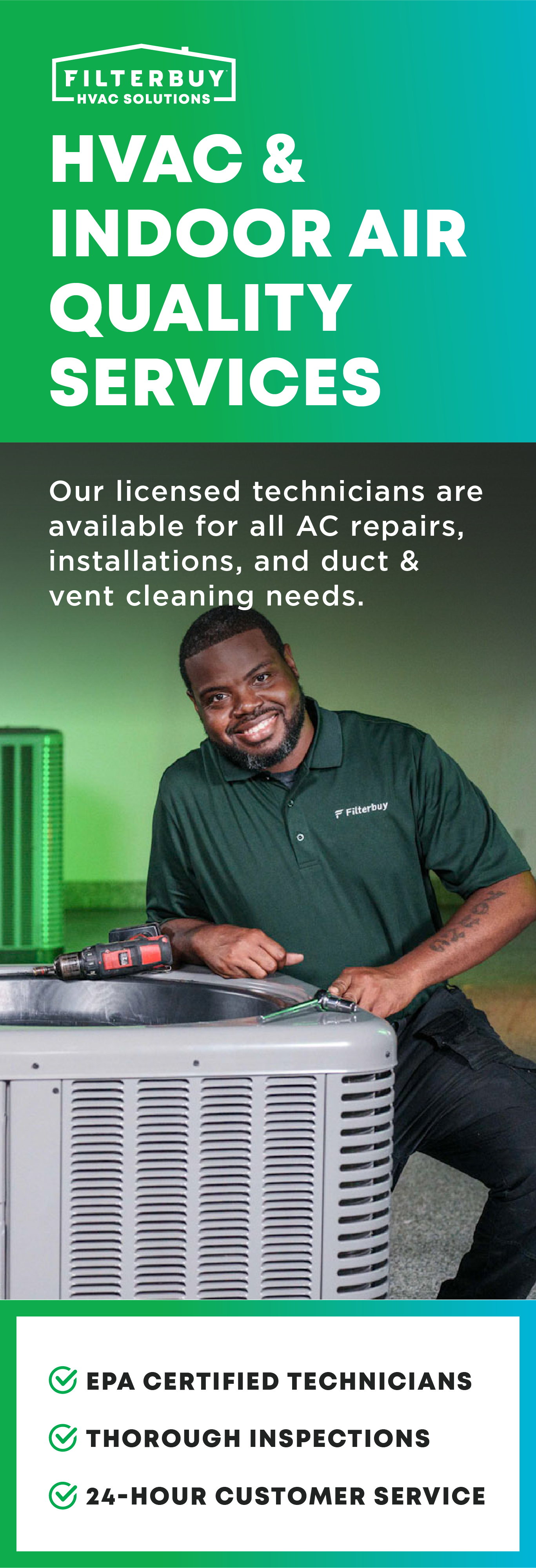Dust, debris, and allergens accumulate in air ducts, adversely affecting air quality and potentially posing health hazards. This article explores the essential role of air ducts and the telltale signs indicating a need for cleaning.
It also discusses the recommended cleaning frequency and the risks of neglecting this task. Additionally, it explains the professional cleaning process.
Understanding the importance of regular air duct maintenance can help ensure a healthier and more comfortable living environment.
Key Takeaways
- Regular cleaning of air ducts is essential for optimal HVAC performance and indoor air quality.
- Signs that indicate the need for air duct cleaning include increased dust accumulation, inconsistent airflow, decline in indoor air quality, unexplained respiratory issues, and musty or unpleasant odors when the HVAC system is running.
- Factors affecting the frequency of air duct cleaning include home size, number of occupants, presence of pets or smokers, and the common recommendation is to have air ducts professionally cleaned every 3 to 5 years.
- Neglected air ducts can lead to compromised air quality, decreased HVAC system efficiency, health issues and allergies, higher energy bills, frequent breakdowns, shorter lifespan of equipment, higher repair or replacement costs, and even pose a fire hazard.
Understanding the Role of Air Ducts
In the context of HVAC systems, air ducts play a fundamental role by facilitating the movement of air in and out of a space, thereby ensuring a balanced and comfortable indoor climate. As conduits for ventilation, heating, and air conditioning, they help control temperature, remove excess moisture, and filter out indoor pollutants.
Over time, these ducts can accumulate dust and debris, which can affect their efficiency and the quality of air they distribute. Regular cleaning is therefore essential to maintain optimal HVAC performance and indoor air quality.
Understanding the role and function of air ducts is the first step towards appreciating the necessity of their maintenance and the frequency of their cleaning.
Signs Your Air Ducts Need Cleaning
Transitioning from the importance of understanding air duct functions to recognizing when they require cleaning, clear signs such as increased dust accumulation, inconsistent airflow, and a noticeable decline in indoor air quality can indicate that your air ducts may be due for a thorough cleaning.
Unexplained respiratory issues, like allergies or asthma flare-ups, may also point to dirty air ducts.
If you notice a musty or unpleasant odor when your HVAC system is running, there could be mold or bacteria growth inside the ducts.
Additionally, seeing vermin or insect infestations near your HVAC system is a strong sign of a need for cleaning.
Observing these signs can guide you to maintain a healthy indoor environment by scheduling regular air duct cleaning.

Determining the Cleaning Frequency
Determining the frequency of air duct cleaning depends on a variety of factors. These factors include the size of your home, the number of occupants, and the presence of pets or smokers. Large homes or those with many residents may require more frequent cleaning. This is because dust and debris can accumulate faster in these environments. Additionally, homes with pets or smokers may also need their air ducts cleaned more often. This is because these factors can contribute to faster duct contamination.
While there is no one-size-fits-all answer, a common recommendation is to have your air ducts professionally cleaned every three to five years. However, it's crucial to monitor your system regularly. It is important to seek professional advice if you notice signs of excessive dust or decreased air quality.
The Impact of Neglected Air Ducts
The neglect of regular air duct cleaning can have significant consequences on both your home's air quality and overall HVAC system efficiency.
Over time, dust, allergens, and other pollutants build up in the ductwork. This not only compromises the air quality, causing allergy symptoms or other health issues for inhabitants but also forces the HVAC system to work harder to maintain desired temperatures.
The strain on the system can lead to higher energy bills, frequent breakdowns, shorter lifespan of the equipment, and ultimately higher repair or replacement costs. Furthermore, excessive buildup in the ductwork can even pose a fire hazard.
Therefore, regular air duct cleaning is not just a matter of cleanliness, but also a crucial part of home safety and maintenance.

Professional Air Duct Cleaning Process
Given the potential hazards and inefficiencies associated with neglected air ducts, a comprehensive professional cleaning process becomes indispensable.
This process typically begins with a thorough inspection to assess the extent of contamination and dust accumulation. Specialized tools such as brushes and high-powered vacuums are then employed to dislodge and extract dust particles.
Following this, sanitization is performed to eliminate any lingering bacteria or mold, ensuring a healthier indoor environment. A key step is the cleaning of the HVAC unit and furnace, as these components can harbor dust and allergens.
Frequently Asked Questions
What Is the Cost of Air Duct Cleaning and Does It Vary Depending on the Size of the House?
The cost of air duct cleaning generally ranges from $300 to $500. It can indeed vary based on the size of the house, as larger homes typically have more ductwork requiring extensive cleaning efforts.
Can I Clean the Air Ducts Myself, or Does It Require Professional Expertise?
While you can perform basic air duct maintenance yourself, a thorough cleaning often requires professional expertise. Professionals have the necessary equipment and knowledge to effectively and safely remove all dust and contaminants.
How Long Does a Typical Air Duct Cleaning Process Take?
The duration of a typical air duct cleaning process can vary considerably, depending on the size of the system and its level of contamination. However, most professional cleanings take between 2-4 hours to complete.
Are There Any Health Risks Associated With Dirty Air Ducts?
Indeed, unclean air ducts can pose health risks. Accumulated dust and debris may harbor allergens, mold, and bacteria, potentially leading to respiratory issues, allergic reactions, and compromised indoor air quality if not regularly cleaned.
Can Regular Air Duct Cleaning Help in Reducing My Energy Bills?
Yes, regular air duct cleaning can potentially reduce your energy bills. Clean ducts allow air to flow more efficiently, reducing the energy required for your HVAC system to heat or cool your home effectively.
How do I know if my ductwork needs to be cleaned?
Signs that your ductwork may need cleaning include increased dust accumulation, musty odors, visible mold growth, reduced airflow from vents, and worsening allergies or respiratory issues among occupants.
What happens if you don't clean your air ducts?
If you don't clean your air ducts, dust and debris can accumulate over time, leading to poor indoor air quality, reduced HVAC system efficiency, increased energy consumption, potential mold growth, and respiratory issues for occupants.
How often do you need to clean your air ducts?
The frequency of air duct cleaning depends on various factors such as the location of your home, the presence of pets, allergies among occupants, and the age of the ductwork. On average, it is recommended to have your air ducts cleaned every 3 to 5 years.
How messy is duct cleaning?
Duct cleaning can be a messy process as it involves dislodging and removing dust, debris, and contaminants from the ductwork. Professional duct cleaning services use specialized equipment to minimize the mess and ensure thorough cleaning.
How do I clean my AC ducts myself?
Cleaning AC ducts yourself can be challenging and may not achieve the same level of thoroughness as professional services. However, you can start by removing vent covers, vacuuming the visible surfaces, and using a damp cloth to wipe down accessible areas.
Will cleaning my air ducts make my house less dusty?
Yes, cleaning your air ducts can help reduce the amount of dust circulating in your home. By removing dust and debris from the ductwork, you can improve indoor air quality and minimize dust accumulation on surfaces.
What are the pros and cons of duct cleaning?
Pros of duct cleaning include improved indoor air quality, enhanced HVAC system efficiency, reduced energy consumption, and potential health benefits. Cons may include the cost of professional services and the possibility of incomplete cleaning if not done thoroughly.
Do all air ducts have mold?
Not all air ducts have mold, but mold growth can occur in ductwork that has been exposed to moisture. Regular maintenance and cleaning can help prevent mold growth in air ducts.
Will cleaning my air ducts make my house smell better?
Cleaning your air ducts can help eliminate musty odors caused by dust, mold, or other contaminants in the ductwork. By improving indoor air quality, cleaning air ducts can contribute to a fresher-smelling home.
Can dirty air ducts affect air conditioning?
Yes, dirty air ducts can affect air conditioning by reducing airflow, causing the system to work harder to maintain desired temperatures, and potentially leading to system malfunctions. Clean ductwork ensures proper airflow and efficient operation of your HVAC system.
Can dirty air ducts make you sick?
Dirty air ducts can contribute to poor indoor air quality, which may exacerbate respiratory issues, allergies, and other health problems among occupants. Contaminants in the ductwork can circulate through the air, potentially causing sickness. Regular duct cleaning can help mitigate these risks.

.webp)
.webp)
.webp)
.webp)







